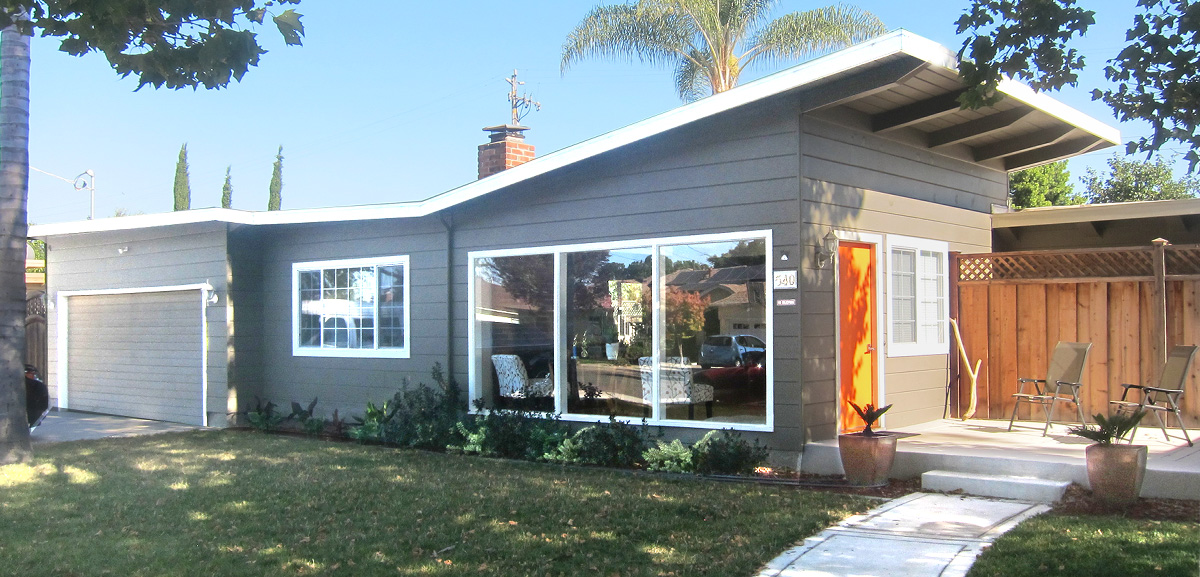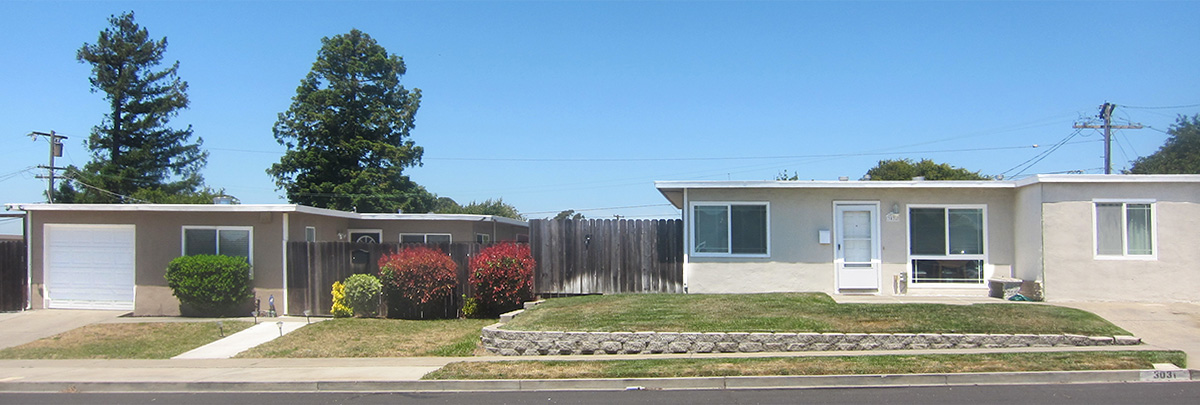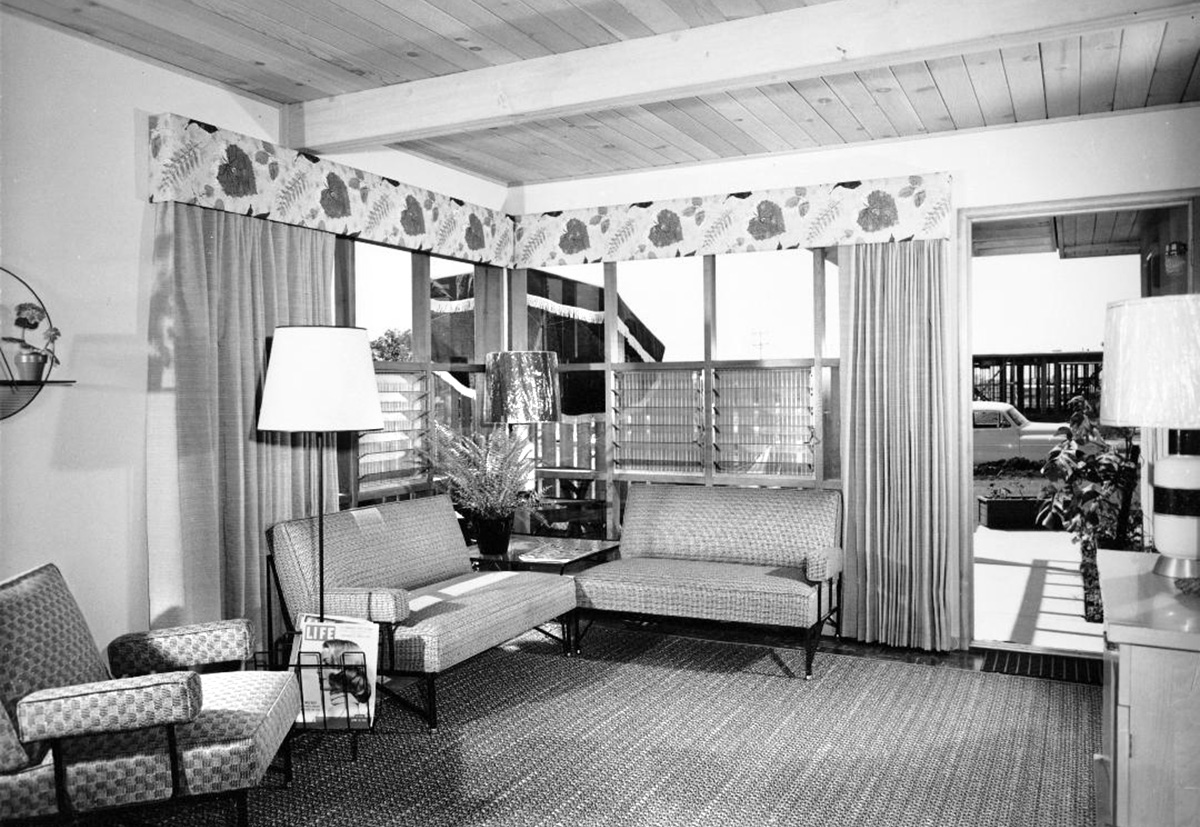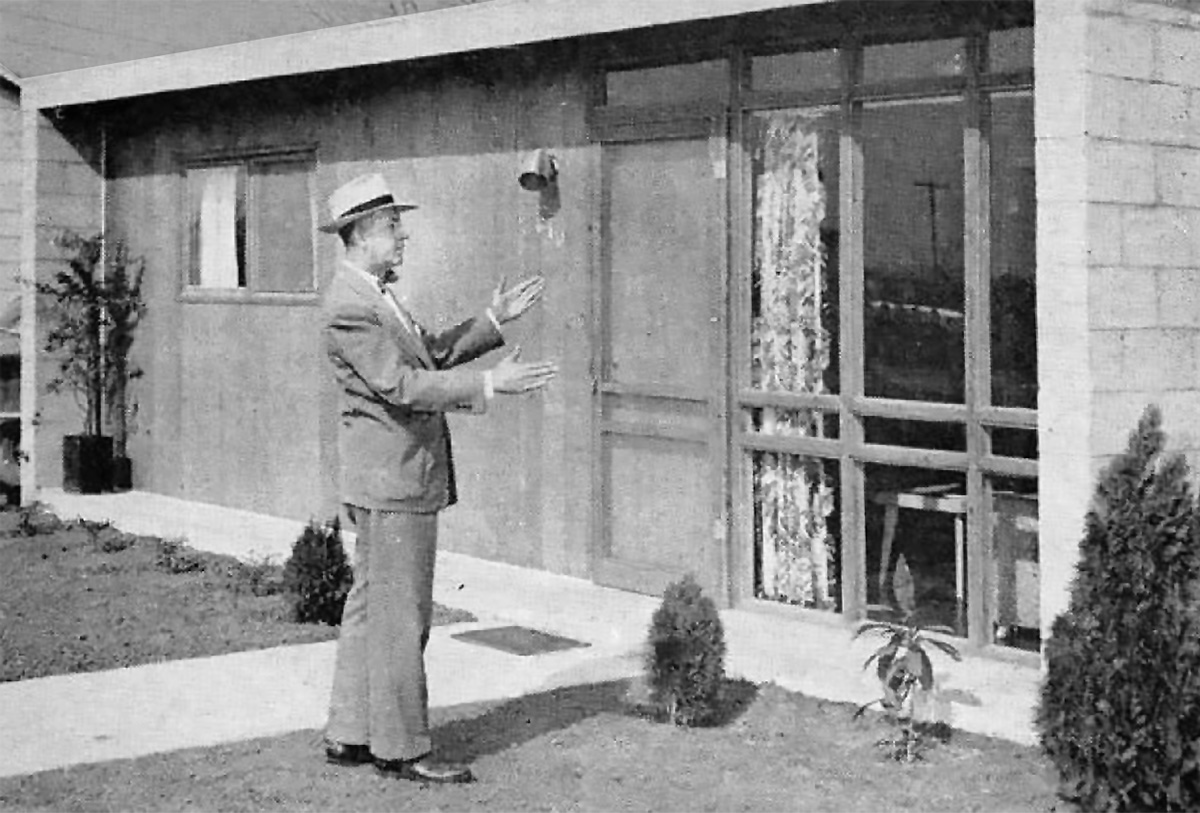
How Homebuilders Rose to the Challenge
 |
Those among us who appreciate the charms of American suburbia all too often read about it in a negative light. Suburbs are monotonous and homogenous, closed to Black people, cruel to women, wasteful of space.
That’s why it’s good to read Elaine B. Stiles, who delves into the world of the post-World War II suburb without condemning it, noting its flaws, analyzing how it came to be, while demonstrating its achievements.
There is much to call out in her work that would appeal to people who admire Eichler homes – though she has not, up to this point, written about Joe Eichler’s tracts in a more than passing way.
In a journal article from 2019, ‘No Simple Dwelling, Design, Politics, and the Mid-Twentieth-Century American Economy House,’ Stiles focuses on one reveaing topic (which she also discusses in her 2020 Ph.D. dissertation for UC Berkeley, ‘Designing the Tract House: Home Builders and the New American Domestic Landscape, 1934‐1959.’):
 |
How homebuilders, both during and immediately after World War II, built 'economy' homes as efficiently as possible aimed at working-class and lower middle-class buyers – but not just to make a buck.
They were hoping, Stiles writes, to “minimize the advancement of government-sponsored public housing.”
Bay Area developer David Bohannon, who built throughout the Peninsula and East Bay from the 1940s, put it this way:
“We must have no illusions concerning the coming showdown between private enterprise and public housing. As a democracy, this nation is rapidly approaching the time when the American people are going to have to choose between the philosophies of freedom of enterprise and government guided socialism.”
 |
About federal programs that favored public housing, Stiles writes: “Builders viewed this development in New Deal housing programs and later federal involvement in war-related home building as threats that could impinge on, or even eradicate, large portions of their potential new lower-income market.”
Builders nationwide were worried about New Deal and later federal programs that provided or encouraged public housing.
But housing advocates argued that public housing was the only way to house working-class people. Stiles quotes one arguing that “housing for these groups never has been and never will be produced for profit.”
For-profit builders tried to prove this argument wrong – and did.
(It is worth noting, as Stiles does, that by encouraging for-profit developers to focus on low-cost housing, the federal programs proved successful. Until the government began pushing public housing, and providing access to low-cost mortgages, private builders simply did not build for the bottom end of the market.
 |
A 1937 report showed that “70 percent of wage earners made less than $2,000 per year (then about median income), but only 20 percent of owner-occupied homes were valued at what those earners could afford.”)
In other words, unless you were prosperous you could not own a home.
Among the builders whose success in creating economy homes Stiles focuses on in her journal piece are two who worked in a modern idiom – Earl ‘Flat Top’ Smith, whose firm was in the East Bay suburb of El Cerrito, and Texan John Moss.
Smith, whose slab foundations and flat roofs influenced Echler, “discerned that the two most cost-effective and time-efficient features in low-cost home construction were pouring a slab foundation at grade and eliminating the complicated framing of a pitched roof.”
Still, nobody produced homes for less than Moss, who was able to sell his compact ‘San Angelo Plan’ home for $3,000.
“The house was a 550-to-650-square-foot two-bedroom dwelling with a reinforced concrete slab foundation, flat roof, masonry side walls with no window openings, and wood-frame front and rear walls.”
 |
Joe Eichler, whose earliest homes, at about 1,100 square feet and going for less than $10,000, could be considered economy, soon was building bigger and aiming for more up-market buyers.
It’s not clear if Joe, more liberal than most builders, considered public housing a threat. It’s clear his architect Bob Anshen did not.
During the war, Anshen wrote an article calling for mass public housing, with “public control over all developments which would include regulation of population density and building density.”
Maybe Anshen was onto something. Public housing, once envisioned as a shared community for working-class as well as poor people, soon primarily warehoused poor people. Eichler’s Geneva Towers highrise residences in San Francisco, which were planned for a mix of incomes, became a vertical poverty row. The buildings were poorly maintained and were imploded in 1998.
As Stiles writes, “The home-building industry was also successful in its aim of stymying public housing for all but the poorest Americans. The Housing Act of 1949 firmly established what housing scholars have described as the ‘two tier’ U.S. housing system of heavily government-supported middle- and upper-class housing production by the private sector and poorly-funded public programs for the poor.”
- ‹ previous
- 323 of 677
- next ›



